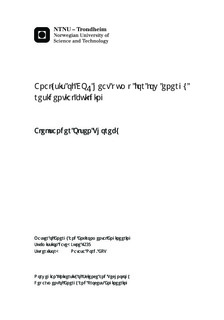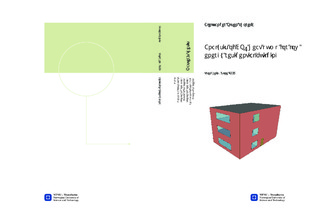| dc.contributor.advisor | Nord, Natasa | nb_NO |
| dc.contributor.author | Thoreby, Aleksander Olsen | nb_NO |
| dc.date.accessioned | 2014-12-19T13:54:00Z | |
| dc.date.available | 2014-12-19T13:54:00Z | |
| dc.date.created | 2013-09-09 | nb_NO |
| dc.date.issued | 2013 | nb_NO |
| dc.identifier | 646737 | nb_NO |
| dc.identifier | ntnudaim:9504 | nb_NO |
| dc.identifier.uri | http://hdl.handle.net/11250/257492 | |
| dc.description.abstract | In low energy buildings heat loss is reduced through energy-saving measureslike heat recovery of ventilation air and a well-insulated buildingenvelope. Consequently the demand for domestic hot water often makesup a larger share of the annual heating demand than in traditional buildings.For this application heat pumps using CO2 as a working fluid areseen as a promising alternative to conventional heat pumps. In the currentstudy a transcritical CO2 heat pump model for use in building simulationswas developed. Some challenges related to the development andimplementation of the model were pointed out.A preliminary study of the model was performed in order to determinethe optimal input parameters for the heat pump in the building of interest.The performance of the heat pump was analyzed over a range ofoperating conditions. Sizing recommendations for the main heat pumpcomponents were made, and a strategy for optimal control of the gascooler pressure was presented.The model was implemented into EnergyPlus and used for energy simulationsof a low energy residential building consisting of three apartments.The heat pump performance was analyzed for different building usagepatterns including ?normal? use, increased demand for domestic hot waterand night-time reduction of the indoor temperature. Simulation resultsshowed and increase in overall system SPF from 2.51 to 2.64 in thecase of increased domestic hot water demand because of more favorableoperating conditions for the heat pump. Results further suggested thatenergy savings in the case of night-time temperature reduction would beminimal due to an increased demand for supplementary heating whenreheating the building. In the latter case the overall system SPF wasreduced to 2.43. Recommendations for achieving a better performancewere made based on the simulations results. | nb_NO |
| dc.language | eng | nb_NO |
| dc.publisher | Institutt for energi- og prosessteknikk | nb_NO |
| dc.title | Analysis of CO2 heat pump for low energy residential building | nb_NO |
| dc.type | Master thesis | nb_NO |
| dc.source.pagenumber | 98 | nb_NO |
| dc.contributor.department | Norges teknisk-naturvitenskapelige universitet, Fakultet for informasjonsteknologi, matematikk og elektroteknikk, Institutt for elkraftteknikk | nb_NO |

